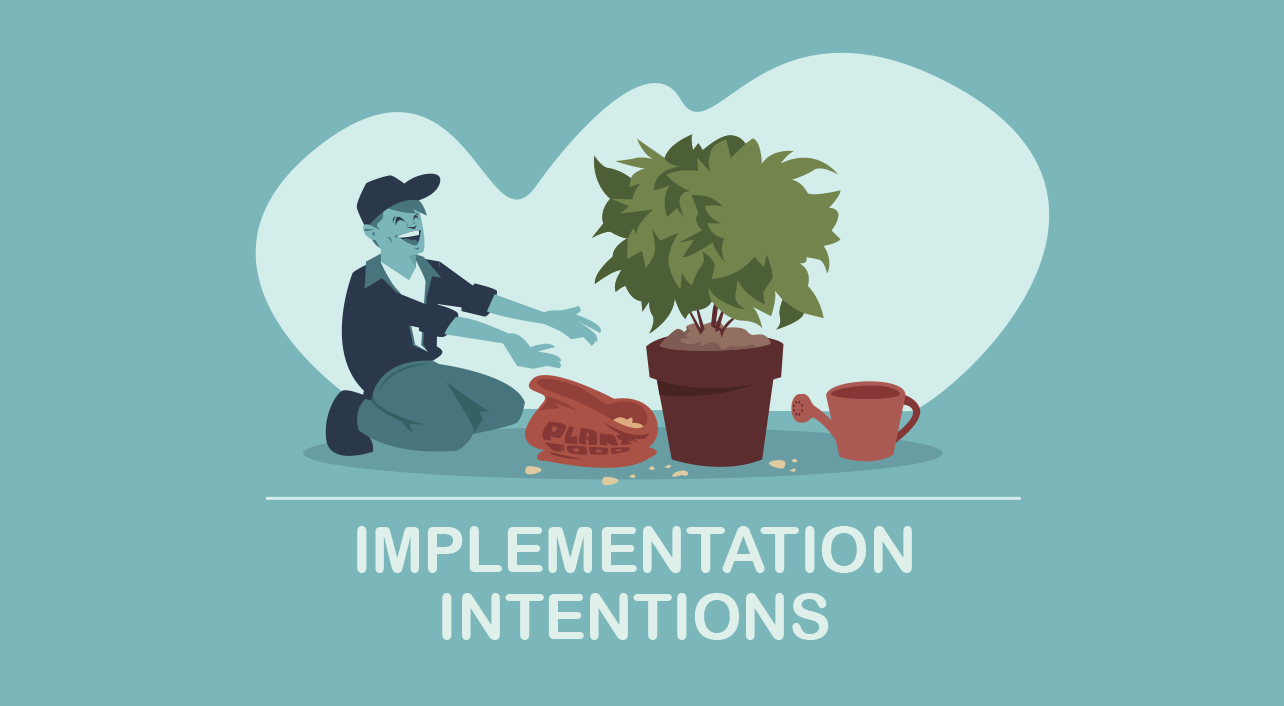- leadership
- Blog post
How ‘implementation intentions’ help people achieve goals
It happens every January: People decide what they want to start doing, or do better, in the year ahead and then, too often, proceed to fail spectacularly at keeping these new year’s resolutions. Clearly, there’s a gulf between articulating goals and reaching them.
When we think about what this means to goal setting in the workplace, the question become, what can managers do to close the gap between goals set and goals achieved?
An answer lies in an experimental study that shows how “implementation intentions” — detailed, concrete plans to achieve a goal — make it much more likely people will in fact achieve it.
Writing it down
In the study, carried out by researchers at three British universities, volunteers who were all committed to exercising more regularly were divided into three groups. One group, the control, got no input from researchers. Another group received a “motivational intervention” — literature showing that regular exercise could prevent heart disease. A third also received the heart literature, and filled out a form like this:
“During the next week I will partake in at least 20 minutes of vigorous exercise ON (here they had to write a specific day) AT (here they put in the time of day) AT or IN – (here they wrote where they intended to exercise).”
Two weeks later, the researchers checked to see who had achieved their goals and who hadn’t. In the control group, only 29% managed to exercise more regularly. There was a slight bump in the success rate, to 39%, in the group that received the literature on heart disease. But in the group where participants wrote down their implementation intentions, fully 91% — almost everybody — achieved their exercise goals.
Many experiments confirm these results. One involving medical self-evaluations got 100% compliance for those who committed to implementation intentions vs. 53% for those who did not. Another study asked students to submit an optional paper after Christmas break; 66% of those who drafted implementation intentions wrote the paper, while not a single person wrote the paper among those who didn’t do implementation intentions.
A matter of X and Y
It seems almost too simple, doesn’t it? If you write down specifically what you intend to do to achieve a goal, you’re almost guaranteed to do it.
A good way to draft implementation intentions is to follow this simple formula:
“When situation X arises, I will perform response Y.”
This formula could describe an action you intend to take at a specific time or place. For example, “On Tuesday at 8 a.m. I will go to the gym” or “I will make 10 cold calls today.”
Or it could describe action you’ll take when you encounter an anticipated obstacle to your goal completion. For example, “When the dessert menu arrives, I will push it aside and ignore it.” Or “when a prospect is rude to me on a cold call, I will assume it’s his problem, not mine, and continue my calls.”
Automatic action
Researcher Peter M. Gollwitzer explains that the situation-X-leads-to-response-Y formula activates psychological processes that trigger a “desired goal-directed behavior” in a way that “does not require conscious intent.” That last bit is important – Gollwitzer is saying that when you map an action to a trigger event, the action tends to happen automatically. Without thinking.
Interestingly, implementation intentions don’t work particularly well on easy goals. Their big impact is on goals that involve tasks we find difficult, either because they’re unpleasant (dieting and exercise) or take us out of our comfort zone (networking, cold calling). But that’s OK, because it’s these difficult tasks that we human beings most need help with!
This blog entry is adapted from the Rapid Learning module “Why Goal-Setting Often Doesn’t Lead to Goal Achievement.” If you’re a Rapid Learning customer, you can watch the video here. If you’re not, but would like to see this video (or any of our other programs), request a demo and we’ll get you access.
The blog post and Rapid Learning video module are based on the following research articles:
Milne, S. E., et al. (2002) Combining motivational and volitional interventions to promote exercise participation: Protection motivation theory and implementation intentions. British Journal of Health Psychology, 7, 163–184.
Gollwitzer, P.M. (1999) Implementation Intentions: Strong Effects of Simple Plans. American Psychologist, (54)7, 493-503.


